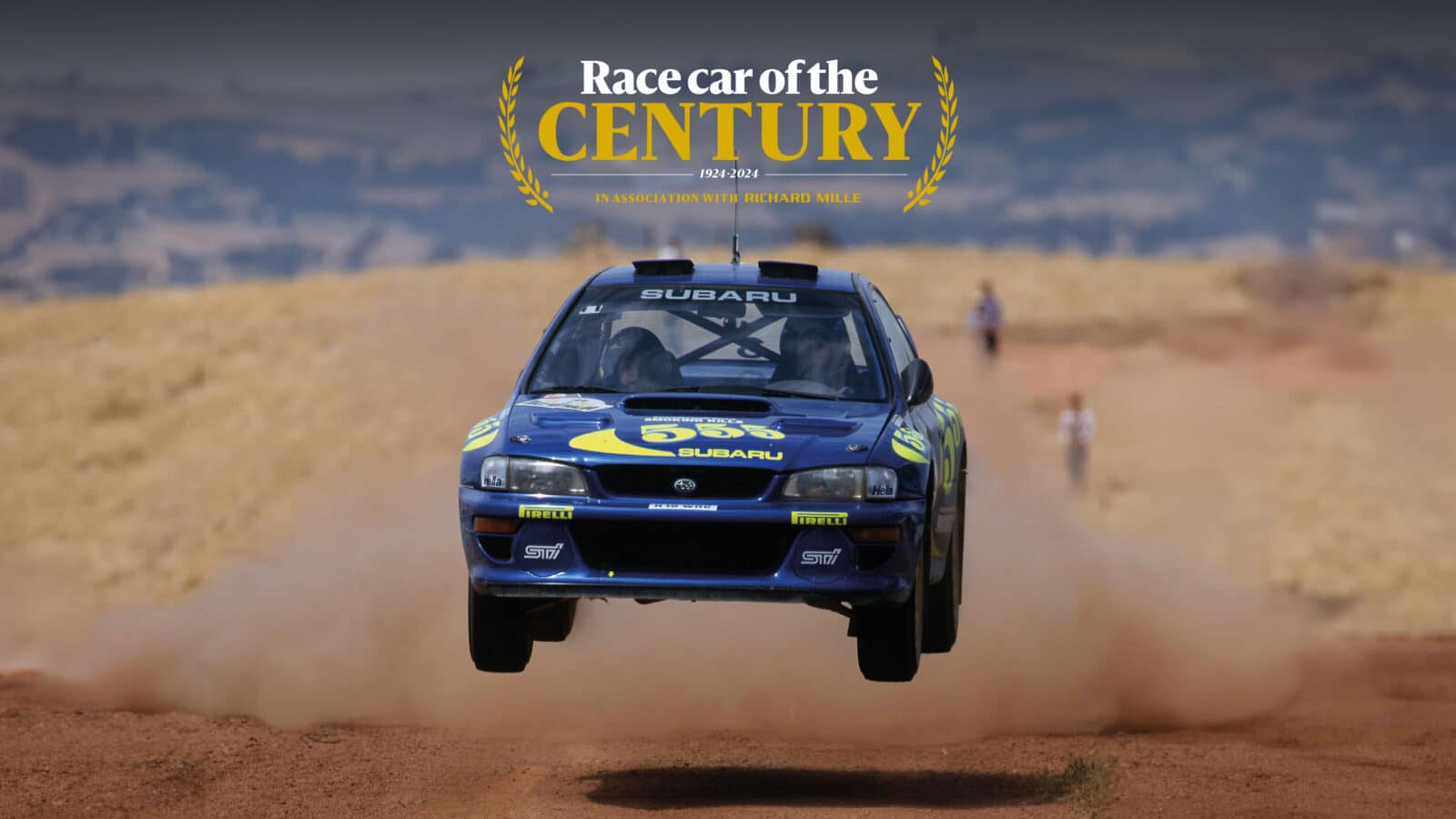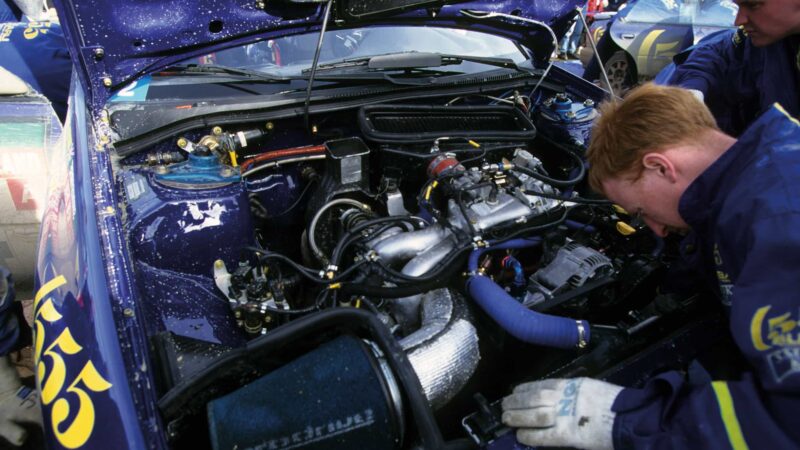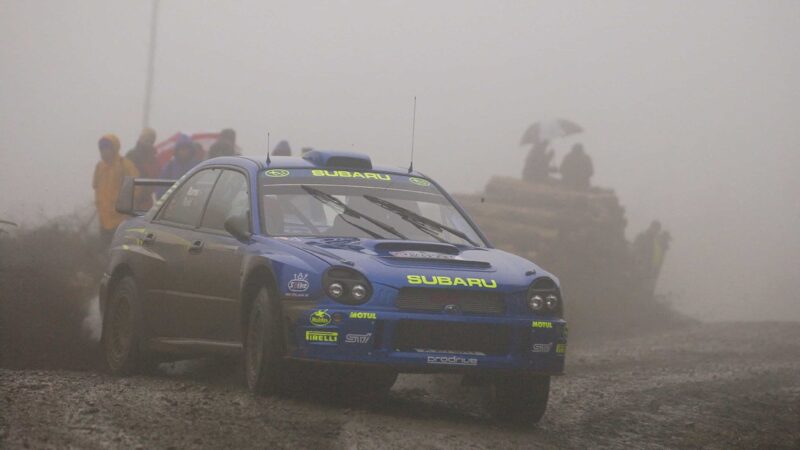Subaru Impreza: Rally car that defined the 1990s
We shift to the 1990s in our search for the finest racing car in Motor Sport’s 100-year history. Anthony Peacock presents... the WRC Impreza

Prerequisite air shot – McRae, Australia, 1997
DPPI
Voting has now closed in our Race Car of the Century poll and the winner will be announced later this summer. Sign up to our Archive newsletter and you’ll be among the first to be notified.
8 1990s Subaru Impreza
Subaru’s biggest success was to harness the power of motor sport marketing like no other manufacturer before or since, entirely transforming its image from rustic transport for farmers to desirable icons; complete with gold wheels and blue paint.
That was completely down to the World Rally Championship. Subaru’s evolutionary process was already well underway by the time the Impreza made its debut in Finland in 1993. Colin McRae’s first WRC win came at the wheel of a Legacy, and he even took part in the Safari Rally with a tiny Vivio – but both of these cars lacked the aesthetic appeal to make Subaru desirable. It took the Impreza to change all that.
The first version, known as the 555 in deference to its title tobacco sponsor, was homologated under the Group A rules in the middle of 1993 and finished second on its Finnish debut in the hands of Ari Vatanen, having even led at one point.
While the Impreza was a lot more nimble than the Legacy, its compact dimensions and extra power also made it considerably more nervous, especially at high speed.
So there was obviously one person it was truly made for. McRae didn’t actually get to drive the car he would become synonymous with until 1994, its first full season, when Prodrive recruited Carlos Sainz to join him in a combination that would make headlines that only added to the Impreza’s prominence.
It was actually Sainz who gave the Impreza its first win, on the 1994 Acropolis Rally, and while two more wins from McRae would bring the victory tally to three that year (the Impreza was only off the podium twice) both were beaten to the drivers’ title by Didier Auriol, with Subaru also defeated by Toyota in the manufacturers’ standings.

At work with the 2-litre boxer engine on the 1995 New Zealand Rally – which McRae won
That all changed in 1995 when Subaru took the first of three consecutive manufacturer titles, while McRae claimed his one and only drivers’ championship – after a season that was one of the most dramatic and compelling that the sport has ever witnessed.
The Impreza was at the very centre of it, cementing the team’s new-found reputation as “the Ferrari of rallying”, as one representative aptly put it. Transport yourself back in time to any rally stage in the mid- to late-1990s, and what you will find is a sea of blue. That’s how popular the Impreza became.
The legend survived intact throughout one of the biggest changes in the history of rallying, when the World Rally Car regulations were introduced in 1997.
To match these new rules, there was a brand new version of the Impreza, with the outgoing GC8 chassis replaced by a two-door car, perhaps the most emblematic design of all.
The flat four ‘boxer’ engine, with its characteristic warble, remained of course – which was a key part not only of the car’s visceral appeal, but also of its dynamics. The low centre of gravity made it more intuitive to drive compared to many rivals, with the sort of incisive turn-in that made it a formidable weapon on asphalt as well as gravel.

Richard Burns’ sole world title, in 2001 driving the revised ‘bug-eye’ -style Impreza, came at ‘the Battle of Britain’ against McRae.
The next big redesign of the Impreza came right at the end of the decade, as Prodrive started work on the P2000, which was launched just after the 2000 season had begun, winning on its debut in Portugal.
Although it looked outwardly similar to the WRC99 version, underneath around 80% was brand new (including trick elements such as a vertical turbo) designed by Prodrive’s Christian Loriaux – who also pioneered innovations such as sitting the co-driver practically on the floor.
“That car,” said Richard Burns, the Portugal winner, “was just immense on gravel. You knew that if you didn’t have any problems, you would win.”
For many, the P2000 – partly influenced by the epic 22B road car – was peak Impreza: others prefer the nostalgic simplicity of the GC8 model. Both defined the decade, thanks also to a visual identity that remained unmistakable, inspiring fans (and car sales) across the globe.
Since then, there have been a number of recreation models that pay tribute; most notably Prodrive’s own 450bhp P25 (£552,000) released last year.
The best thing about the Impreza, as our car of the decade for the 1990s, is that you can still actually drive it and feel connected to your heroes every day. That seductive WRC DNA is with you for every mile: any of the road cars actually sound like the rally car.
Subaru made the most of that connection with a number of special editions, such as the RB5 and P1, which have skyrocketed in value over the years. And with the 30th anniversary of McRae’s title coming up, the Impreza legend is only set to get stronger.
MS verdict: The Impreza transcended WRC and motor sport, and was emblematic of its time and generation.
